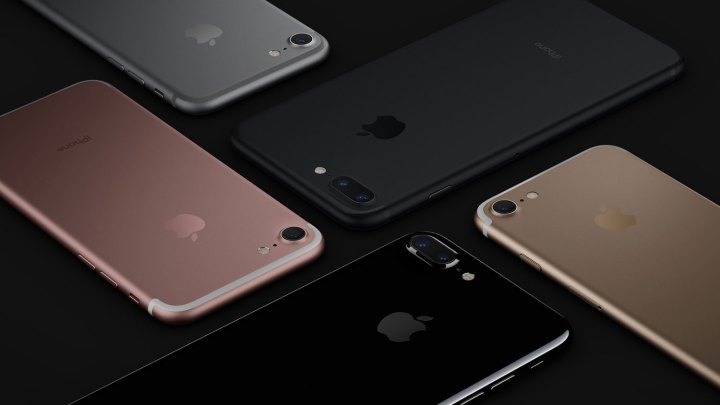
First up was the iPhone 7 Plus, and iFixit’s surface findings confirmed much of which had earlier been revealed. The iPhone 7’s pricier, larger sibling features Apple’s A10 Fusion processor, a 5.5-inch 1080p (1,920 x 1,080-pixel) Retina HD display, and a capacitive home button with a Touch ID fingerprint sensor. A deeper dive peeled back the cover on the phone’s innards: an storage module in flavors of 32GB, 64GB, or 256GB, depending on the configuration, plus cameras out the wazoo. On the front’s a 7 MP FaceTime HD camera with f/2.2 aperture, and on the back’s a dual-sensor module with 12 MP wide-angle and telephoto cameras with f/1.8 and f/2.8 apertures.
It’s a relatively easy phone to tear apart, iFixit reports, thanks in large part to Apple’s liberal use of the Pentalobe screws found in last year’s models. But the iPhone 7 Plus, unlike last year’s model, bears the hallmark signs of waterproofing. It opens to the side when the display’s removed as opposed to from the top as on older models, contains a sticky strip around the interior housing that’s far stronger than the one in older iPhones, and both the plastic SIM plug and SIM tray pack water-resistant rubber plugs and coating.
Furthermore, the Lightning connector features a protective gasket as opposed to the foam found on models in years past, and it’s chock full of what iFixit describes as water-resistant “gooey adhesives.”
Those aren’t the only surprises. Concealed beneath the iPhone 7 Plus’s silicon shielding is 3GB of RAM, iFixit reported. And in place of a 3.5mm headphone jack is a water-resistant rubber bumper and Apple’s new, larger Taptic Engine, the successor to the haptic vibration motor that debuted on the iPhone 6s Plus.
Above that engine is a battery that is a bit of a mixed bag. According to iFixit, it’s got a 2,900mAh capacity, making it slightly larger than the iPhone 6S Plus’s cell (2,750mAh) but a step down from that of the 6 Plus (2,750mAh). (Apple claims that, thanks to improvements in software efficiency, the 7 Plus’s battery should last up to one hour longer than the 6s Plus.)
The iPhone 7 Plus’s other headliner is its rear-facing camera. The handset’s module comprises two 12 MP cameras, one wide-angle and one telephoto, but according to iFixit they are otherwise nearly indistinguishable from one another. Both sport optical image stabilizers. Both contain custom lenses. And both feature an image processor that Apple says is 60 percent faster and 30 percent more energy efficient than the cameras in previous iPhones.
The iFixit team didn’t stop with the iPhone 7 Plus. They also tore down Apple’s new smartwatch: the Apple Watch Series 2. And unsurprisingly, the hardware aligned with what Apple announced publicly in the days preceding.
The Series 2 packs an OLED Retina display with Force Touch; comes in two sizes, 38 mm (272 x 340 pixels) and 42 mm (312 x 390 pixels); sports Apple’s new S2 chip; features a 273mAh battery that delivers a 32 percent increase in power over the previous generation; and contains a bevy of activity-tracking sensors including an accelerometer, gyroscope, heart rate sensor, microphone, speaker, and ambient light sensor.
Under the hood is a different story. The adhesive holding together the Series 2’s body is “much stronger” than the material of last year’s model, iFixit reports — likely a product of Apple’s waterproofing efforts (the Series 2 is rated for safe use in water up to 50 meters deep). There’s substantially more glue on the Series 2’s battery than last year’s model, and there are many of the same waterproof gasket and rubber components found in the iPhone 7 Plus. There’s a “noticeably larger” Taptic Engine, plus a speaker equipped to mechanically pump excess water from its housing. And on the back of the S2 processor is a second microphone.
If there’s a big, overarching takeaway from iFixit’s latest teardowns, it’s that the iPhone 7 Plus and Apple Watch Series 2 appear much more water resistant than iPhone and Watch models in years past. But there aren’t any other major surprises. Those, it seems, will have to wait until next year: Apple’s next iPhone is rumored to eschew a home button, pack a curved AMOLED screen, and support wireless charging.


